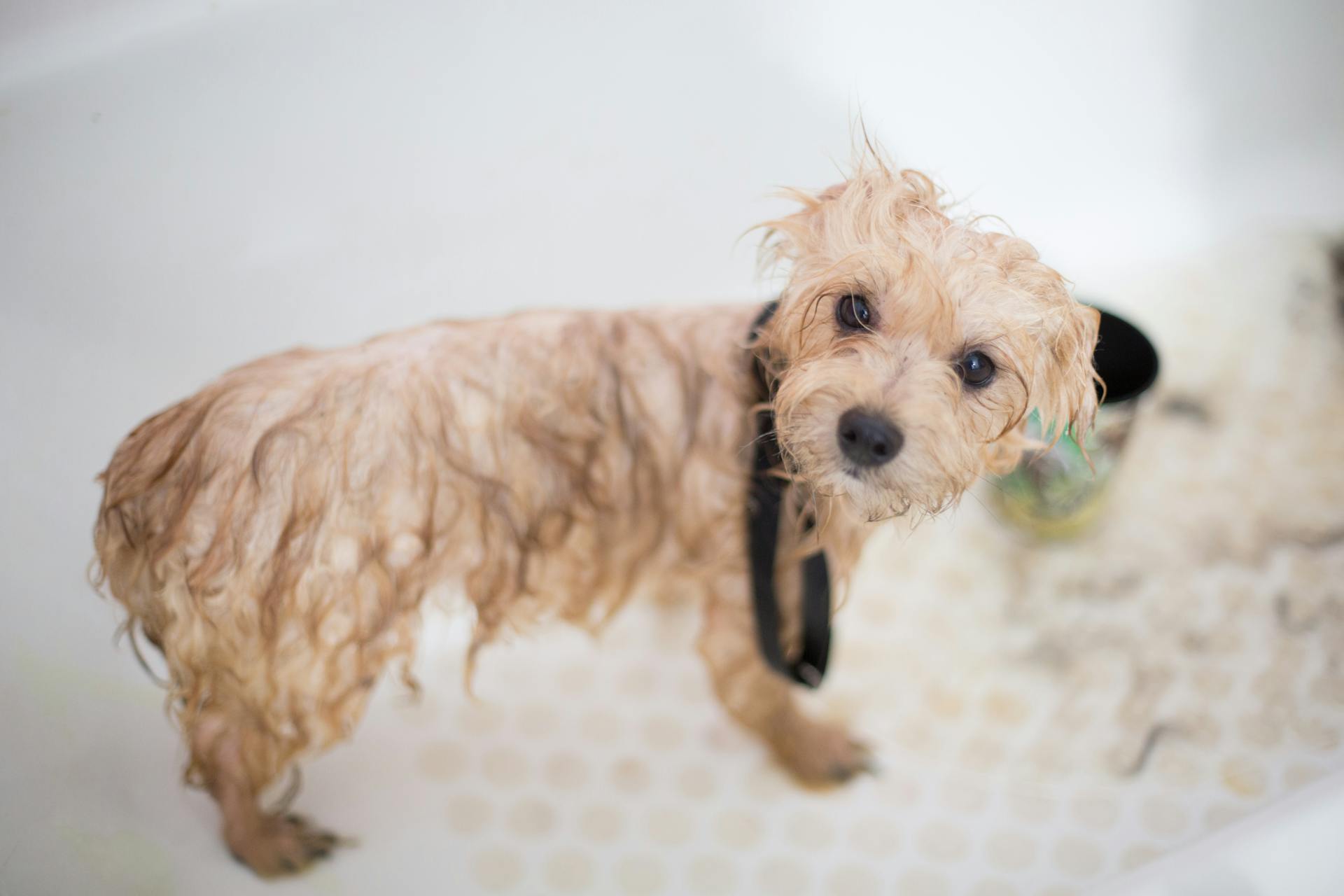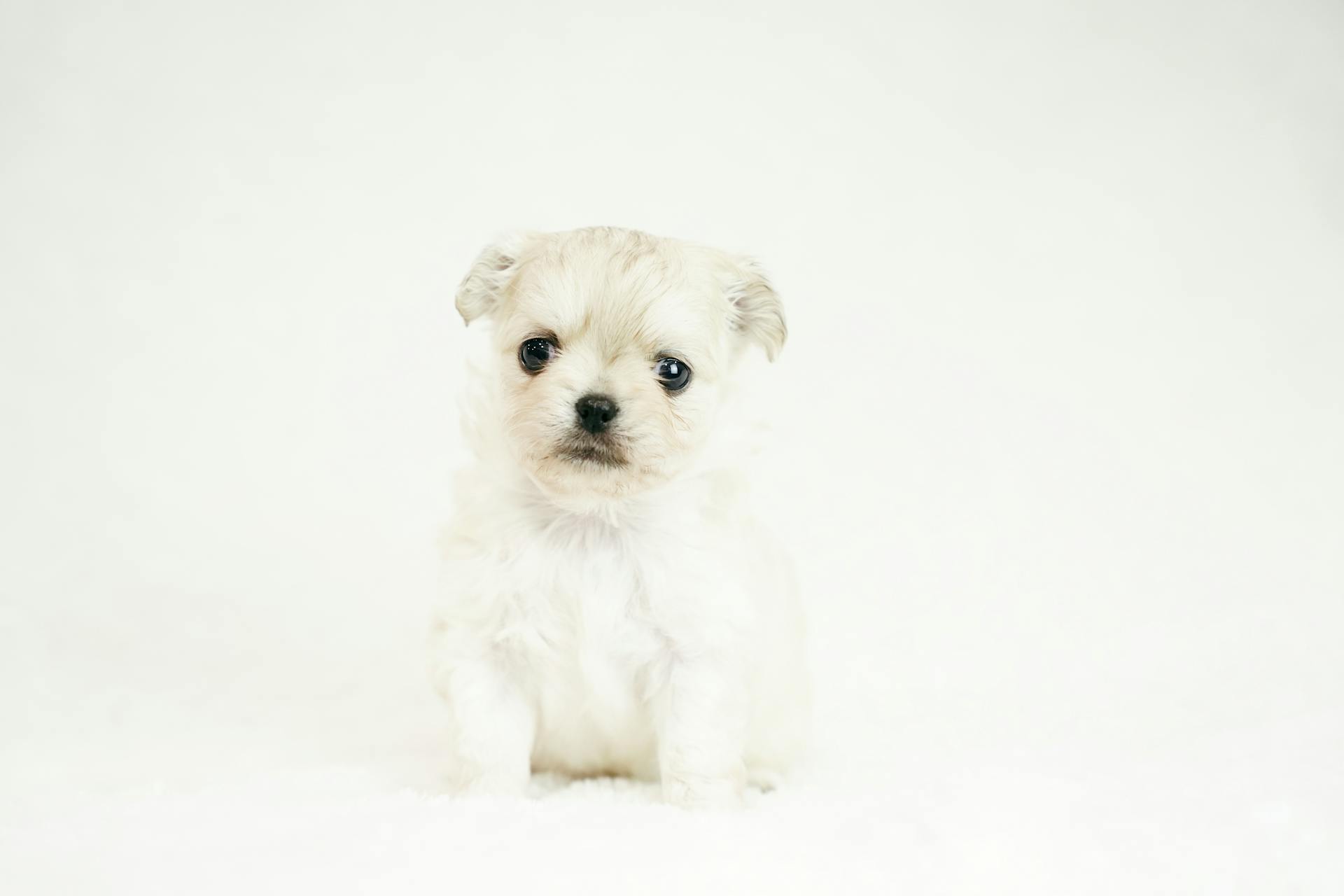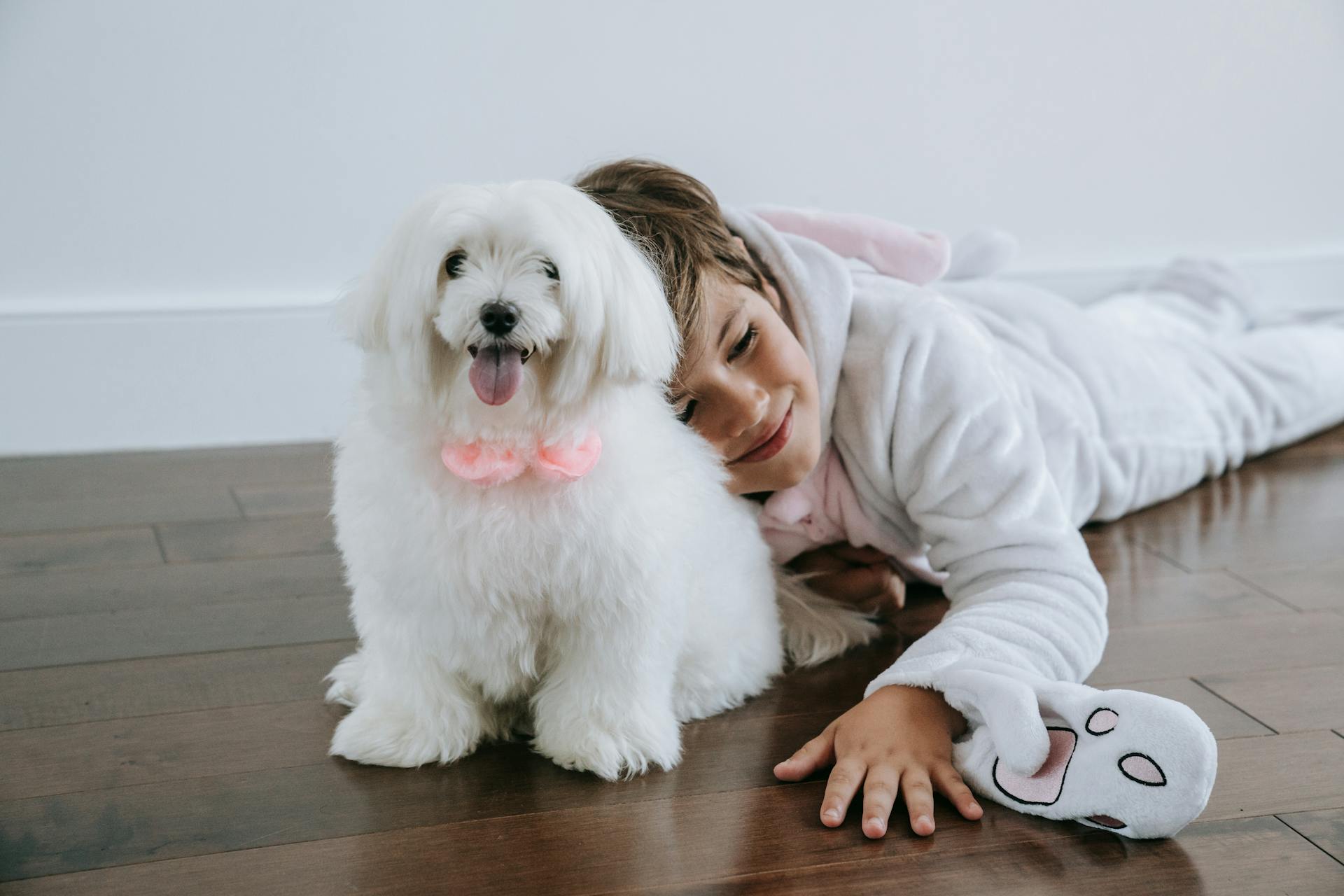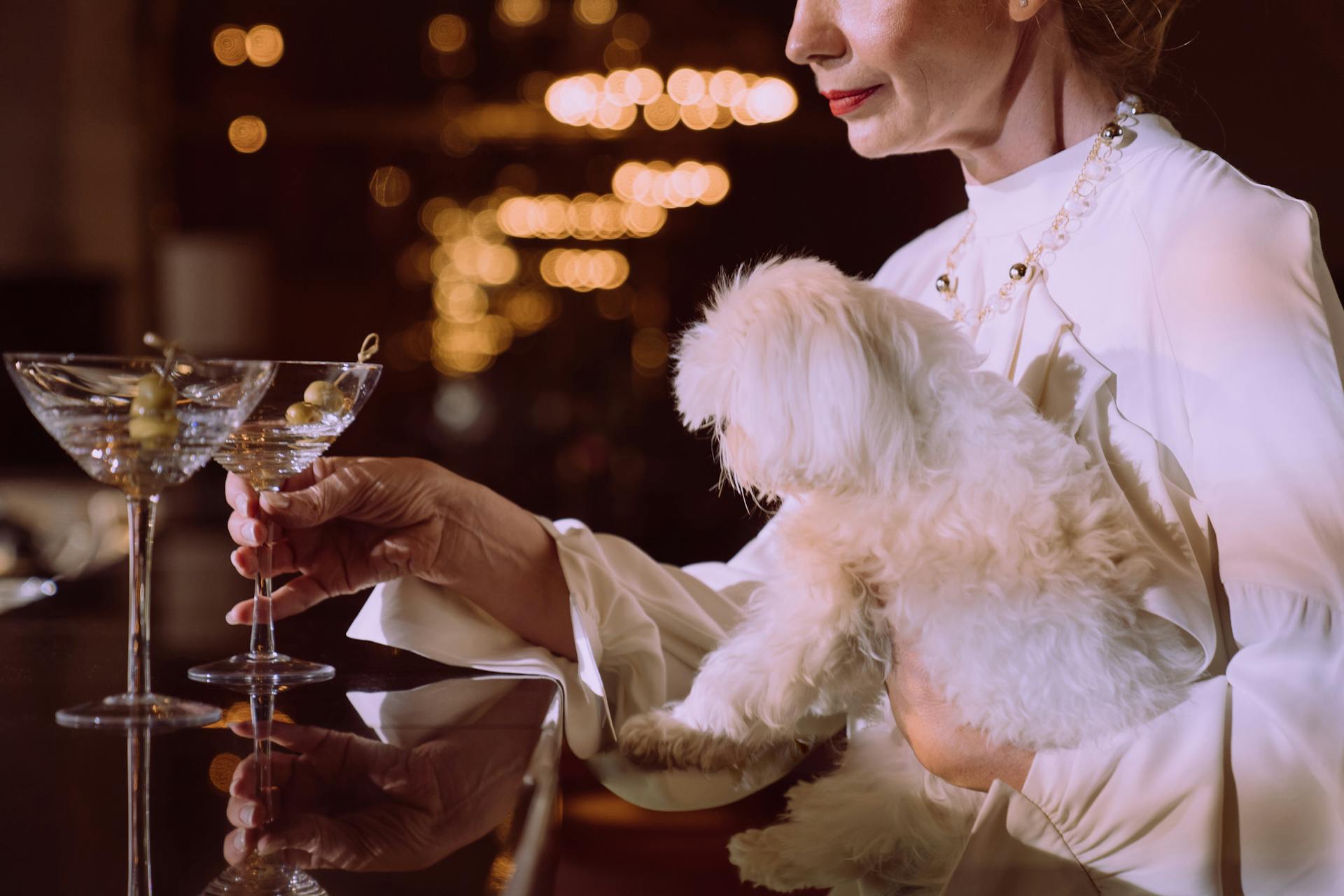
The Maltipoo Maltese is a crossbreed between a Maltese and a Poodle, typically a Toy or Miniature Poodle. This mix creates a friendly and outgoing dog.
Maltipoos are known for their low-shedding coat, making them a great choice for people with allergies. They require regular grooming to prevent matting and tangling.
One of the most appealing aspects of Maltipoo ownership is their affectionate nature. They bond strongly with their family and are often described as "velcro dogs" due to their tendency to stick close by.
With proper training, Maltipoos can thrive in a variety of living situations, from apartments to homes with yards.
Characteristics
The Maltipoo is a small dog that weighs between 3 and 6 kilograms on average, but can weigh up to 10 kilograms.
Its size and weight vary mainly depending on the size of the Poodle's parents, but they usually stand between 28 and 35 centimeters tall.
The Maltipoo has a distinctive "teddy bear look" with floppy ears and large, round googly eyes, making it a very popular breed.
Its coat is dense, voluminous, and curly, coming in all colors, primarily white, cream, and silver due to the Poodle's genetic influence.
Maltipoos are considered very robust and not particularly susceptible to hereditary diseases, with a life expectancy of 12 to 15 years.
Appearance
Maltipoos are small dogs that typically grow to be no more than 14 inches tall.
They can range in weight from 5-20 pounds, making them a great fit for apartment living or for families with small children.
Their soft coat is usually medium-to-long length and can be wavy or curly in texture.
Maltipoos can be almost any color due to their diverse parent breeds, but they're most commonly white and cream.
They can also have bicolor, tricolor, or even a marbled coat, making each Maltipoo unique.
While they shed very little, it's essential to note that no dog is completely hypoallergenic.
You might enjoy: Maltipoo Coat Types
Personality / Character
The Maltipoo's personality is truly one-of-a-kind. They're sweet, intelligent, and loyal, making them an excellent service dog due to their attentive and kind nature.
Maltipoos are usually carefree and easy to get along with, which is perfect for families with pets. They're often reserved towards strangers, but not aggressive.
Their teddy bear look makes them irresistible, but it's their gentle and affectionate nature that really sets them apart. Maltipoos are completely satisfied watching life go by from the lap of their human.
They're also very adaptable and can thrive with active people as well as those who prefer a more relaxed lifestyle. A certain amount of exercise is always important, but they're not high-maintenance in this regard.
Maltipoos are intelligent and playful, which makes them a joy to be around. They're very attached to their family or caregiver, which is a testament to their loyal nature.
They can get along with just about anybody, as long as they're properly socialized in puppyhood. This makes them a great choice for families with children, as long as the kids are old enough to handle them gently.
See what others are reading: How Long Can a Maltipoo Be Left Alone
Health and Care
The Maltipoo's coat is a high-maintenance aspect of their care. They require daily brushing to prevent matting and sores.
Their curly coat sheds very little, but it's essential to bathe them with a mild dog shampoo from time to time to remove deep-seated dirt and keep their coat shiny and fluffier.
Regular trimming is crucial to prevent skin problems, and it's best to find a good groomer or learn how to do it yourself.
The Maltipoo's claws need regular attention, and trimming them with claw scissors is necessary if they become too long.
It's also essential to check their ears and teeth regularly, as their drooping ears can be prone to inflammation or foreign bodies, and their teeth tend to form tartar quickly.
The Maltipoo is prone to several health issues, including Portosystemic Shunt, Shaker Syndrome, Patellar Luxation, and Epilepsy.
Their lifespan is typically between 10-13 years, but responsible owners should be aware of potential issues such as White Shaker Syndrome, Luxating Patellas, allergies, dental disease, and progressive retinal atrophy.
Consider reading: Maltipoo Health Issues
Grooming
Grooming is a must for Maltipoos, especially those with the Poodle's curly coat, which requires regular grooming appointments to keep it shiny and tangle-free.
These appointments are crucial to prevent matting and tangling, which can be painful for the dog.
Curious to learn more? Check out: How to Groom a Maltipoo
Daily brushing is also necessary to remove shed hair and prevent it from getting all over the house.
Some Maltipoos will have straight and wavy coats like their Maltese parent, but they still require regular grooming to keep their coats looking their best.
In either case, these dogs have more grooming needs than most, so be prepared to make grooming a regular part of your routine.
The Right Food
As a Maltipoo Maltese owner, you want to make sure your furry friend is getting the right food to thrive. Choose a high-quality dog food that meets your Maltipoo's requirements.
Age, size or weight, activity, and health status all play a crucial role in determining the right food for your Maltipoo. Puppies, in particular, have different needs than adult dogs.
Puppies can be fed 4-6 times a day, but the number of meals should be gradually reduced to 2 per day until your Maltipoo is fully grown.
If this caught your attention, see: Maltipoo Puppy Food
Origin and History
The Maltipoo breed originated in the USA in the 1980s, specifically designed to create a fashionable small companion dog for allergy sufferers.
The targeted mating of Maltese and Miniature Poodle aimed to combine the best characteristics of both parent breeds.
The poodle is often crossed into modern hybrid breeds, passing on its hypoallergenic, non-shedding coat and intelligence.
The Maltese has been bred for generations as a sociable lap dog, contributing to the Maltipoo's extremely cute appearance.
As a result of its people-oriented character, the Maltipoo makes for a great companion dog.
For a long time, the Maltipoo was found almost exclusively in America, but breeding has since spread to Europe and Asia.
The United States Kennel Club recognized the Maltipoo as an independent breed in 1995.
Choosing a Maltipoo
The Maltipoo is a cross between a Maltese and a Poodle, typically weighing between 4-8 pounds.
Their small size makes them a great choice for apartment living.
The lifespan of a Maltipoo is 12-15 years, so be prepared for a long-term companion.
They require regular grooming to prevent matting and tangling of their fur.
A Maltipoo's temperament is generally friendly and outgoing, making them a great addition to families with children.
Breed Availability
If you're looking to bring a Maltipoo into your life, you might be wondering where to find one.
One option is to contact local or regional Maltese, poodle, or small-breed dog rescues, as they often take in Maltipoos.
You can also try reaching out to local animal shelters and humane societies, as many Maltipoo puppies and adult dogs end up being surrendered there.
To ensure you're getting a healthy Maltipoo from a reputable breeder, look for one who can provide detailed information about their litters, including each parent's health testing results and veterinarian references.
In fact, responsible Maltipoo breeders should encourage you to visit their home or kennel and meet the dogs.
Choosing the Right Breed
The Maltipoo is a great option for families with children because it's slightly bigger and more child-friendly compared to the Maltese.
Its size also makes it suitable for apartment living, as it doesn't require a lot of space.
The Maltese is a better fit for seniors due to its small size and lower maintenance costs.
However, the initial costs for a purebred Maltese can be quite high.
Daily brushing is essential for both breeds to prevent matting and keep them looking their best.
Both the Maltipoo and Maltese have friendly temperaments, making them wonderful companions.
Suitable for:
If you're considering bringing a Maltipoo into your family, you'll want to think about whether they're a good fit for your lifestyle. Maltipoos are suitable for active families who enjoy their time at home.
They're also great company for seniors, as they're highly intelligent and can offer companionship and assistance if needed. In fact, their intelligence makes them a great choice for families who want a dog that can learn and adapt.
Maltipoos are small enough for apartment living, making them a great option for city dwellers. However, they do require regular grooming, so you'll need to factor that into your budget and schedule.
Here are some key characteristics to consider:
- Intelligent
- Kind-natured
- Small enough for apartment living
- Good for families
While Maltipoos can make great family pets, they may not be the best choice for families with tiny children due to their small size. And, as with any breed, it's essential to be aware of potential health issues.
First Dog Pros and Cons
Having a Maltipoo as your first dog can be a wonderful experience, but it's essential to consider the pros and cons before making a decision.
The pros of having a Maltipoo as your first dog include their gentle and affectionate nature, which makes them an excellent choice for families with children.
Maltipoos are relatively small in size, weighing between 4-8 pounds, making them a great option for first-time dog owners who live in apartments or have limited space.
They are also relatively low-maintenance when it comes to grooming, requiring only occasional brushing and bathing.
However, Maltipoos can be prone to separation anxiety and require regular exercise and mental stimulation to prevent destructive behavior.
Their small size also means they can be fragile, so they require careful handling and protection from injury.
Despite these challenges, many first-time dog owners find that the rewards of having a Maltipoo far outweigh the difficulties.
Frequently Asked Questions
How big does a Maltese Maltipoo get?
A Maltese Maltipoo typically grows to be between 8-14 inches tall and weighs between 5-20 pounds. Their size can vary depending on the size of their Poodle parent.
Are Maltipoo and Maltese the same?
No, Maltipoo and Maltese are not the same, as the Maltese is an ancient breed while the Maltipoo is a relatively new crossbreed between a Poodle and a Maltese.
Is a Maltipoo a good house dog?
Maltipoos can make excellent house dogs for families and singles, but they require proper socialization and attention to prevent separation anxiety
Do Maltipoo bark a lot?
Maltipoos are generally quiet dogs, but may bark occasionally to alert their owners to strangers or danger. Their barking tendency is relatively low compared to other breeds.
How do I tell if my dog is a Maltipoo?
To determine if your dog is a Maltipoo, look for a small stature, rounded head, and floppy ears, which are characteristic features of this breed. If your dog exhibits these traits, it may be a Maltipoo, but a DNA test or consultation with a veterinarian can confirm its ancestry.
Featured Images: pexels.com


